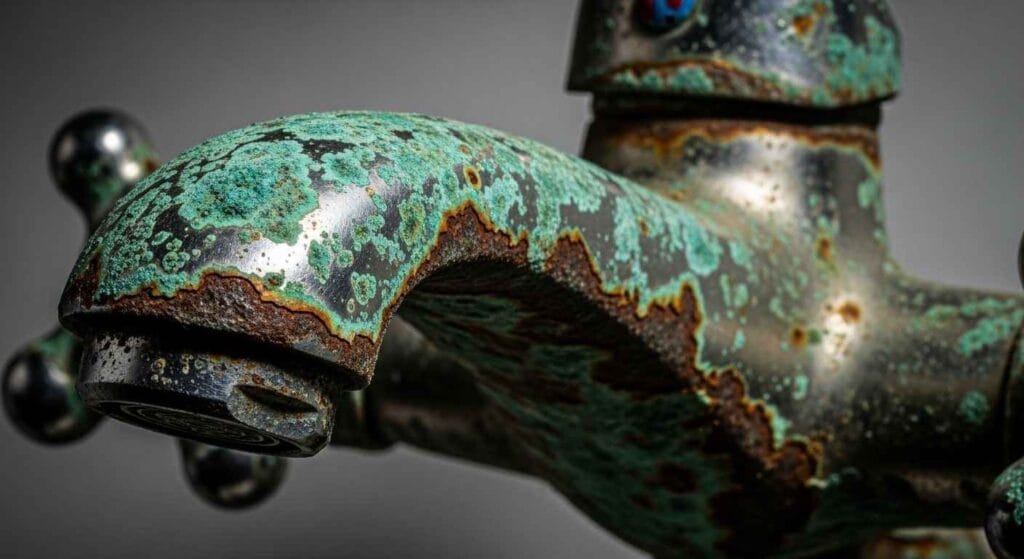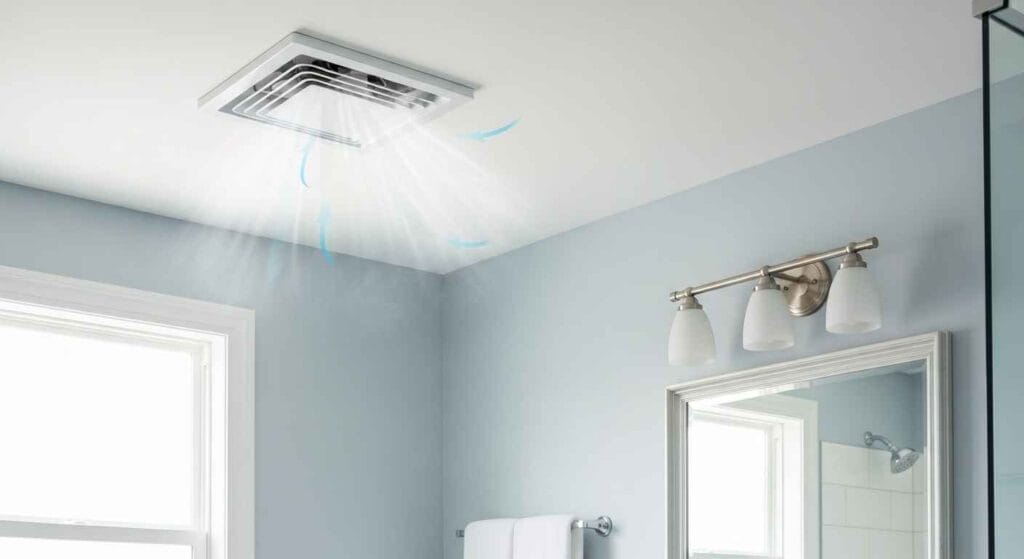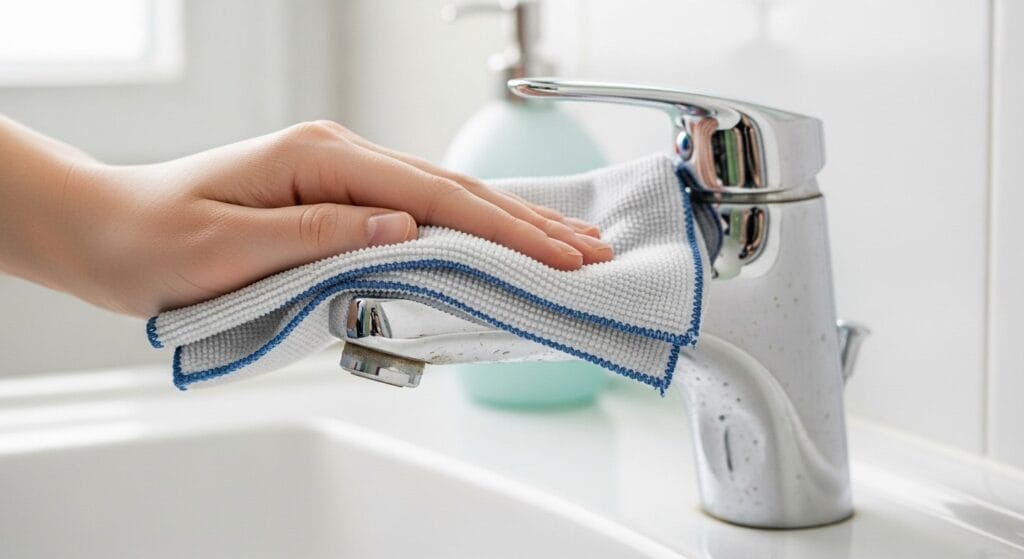When a bathroom faucet starts to look dull, stained, or even pitted, it’s more than just a cosmetic issue. It’s often a clear sign that something deeper is at play within your plumbing system and home environment. As a contractor, I’ve seen countless homeowners puzzled by this problem, wondering why their once-shiny fixture is showing its age prematurely.
- Understanding the Root Causes of Faucet Corrosion
- The Impact of Hard Water: Mineral Buildup and Damage
- Humidity and Moisture: The Bathroom’s Corrosive Environment
- Faucet Material Quality: Your Best Defense Against Corrosion
- Proactive Strategies to Prevent Bathroom Faucet Corrosion
- Effective Cleaning and Regular Faucet Maintenance
- Boosting Bathroom Ventilation for Longevity
- Investing in Water Quality Solutions
- Smart Selection: Choosing Corrosion-Resistant Faucets
- Frequently Asked Questions About Faucet Corrosion

It’s a common issue, but understanding what causes bathroom faucets to corrode is the first essential step toward effective prevention. From my perspective, honed over years of working on plumbing systems, the culprits are usually a combination of water quality, environmental factors, and the very materials your faucet is made from. It’s rarely one single thing, but rather an ongoing interaction between these elements that leads to bathroom faucet corrosion.
Understanding the Root Causes of Faucet Corrosion
Corrosion on a bathroom faucet isn’t a random event; it’s a chemical process driven by several identifiable factors. At its heart, corrosion is the gradual destruction of materials by chemical or electrochemical reaction with their environment. In the bathroom, that environment is typically water, air, and whatever cleaning chemicals we introduce.
I’ve often seen folks blame a “cheap faucet,” but while material quality certainly plays a role, even high-end fixtures aren’t immune if the conditions are right. It’s about more than just the initial shine; it’s about the long-term chemical dance happening right on the surface of your plumbing fixtures.
Chemical Reactions and Galvanic Corrosion in Faucets
One of the primary drivers of faucet corrosion is simple chemical reaction, particularly oxidation. When metals like copper, brass, or even the underlying layers of a chrome-plated faucet come into contact with oxygen and water, they can start to revert to their more stable oxidized forms. Think of rust on iron – that’s a familiar form of oxidation.
In faucets, this might manifest as green patina on copper pipes or a dulling of chrome. Another less obvious but significant cause is galvanic corrosion. This occurs when two dissimilar metals are in electrical contact and immersed in an electrolyte, like tap water. For instance, if a brass faucet body is connected to a different type of metal in the plumbing system, or even if the plating on the faucet itself is compromised, an electrochemical cell can form. This leads to one of the metals corroding at an accelerated rate. I’ve seen this happen subtly over time, often mistaken for simple wear and tear on bathroom faucets.
The Hidden Dangers of Harsh Cleaning Products
A common mistake I frequently encounter is the use of harsh or inappropriate cleaning products. Homeowners, wanting to restore their faucet’s luster, often grab the strongest cleaner they can find. Unfortunately, many common household cleaners contain abrasive chemicals, strong acids, or alkalis that can strip away the protective coatings on faucet finishes.
Once that protective layer – be it chrome, nickel, or a PVD finish – is compromised, the underlying base metal becomes exposed and vulnerable. I’ve seen once-pristine chrome faucets develop black spots and peeling finishes, not from water, but from repeated attacks by cleaners not meant for delicate fixtures. Always check the label and opt for pH-neutral, non-abrasive cleaners specifically designed for bathroom faucet maintenance.
The Impact of Hard Water: Mineral Buildup and Damage

Hard water is, without a doubt, one of the most persistent and damaging adversaries for bathroom faucets. It’s an issue I come across in homes all the time, especially in regions known for their mineral-rich water. Many homeowners see the chalky buildup and assume it’s just an aesthetic nuisance, but the truth is, this mineral-laden water is constantly working to degrade your fixtures. It’s not just about the visible scale; the minerals themselves are constantly interacting with the faucet’s surface.
How Limescale Forms on Bathroom Faucets
Hard water contains elevated levels of dissolved minerals, primarily calcium and magnesium carbonates. When this water evaporates from the surface of a faucet, it leaves these minerals behind, forming those familiar white, crusty deposits known as limescale. This buildup isn’t just unsightly; it creates a rough, uneven surface where moisture can linger and abrasive particles can collect.
In my experience, even high-quality faucets can struggle against relentless mineral buildup. What starts as a thin film quickly becomes a tenacious layer that can be incredibly difficult to remove without damaging the faucet’s finish. It often collects around the base, the spout, and especially where water drips, creating a micro-environment ripe for further chemical attack and faucet corrosion.
Etching and Degradation: The Science of Hard Water Damage
Beyond just accumulating, hard water minerals can actively contribute to the corrosion process. The limescale itself can trap moisture against the faucet’s surface, preventing proper drying and creating an environment for oxidation. Furthermore, the minerals in hard water can be slightly acidic or alkaline, depending on their composition and concentration.
This means they can chemically react with the faucet’s finish over time, leading to etching – a subtle, microscopic roughening of the surface that dulls the shine and makes it more susceptible to further corrosion. I’ve seen countless faucets where the finish looks “eaten away” in certain spots, and more often than not, it’s the result of prolonged exposure to hard water and its chemical properties. This etching weakens the protective barrier, allowing more aggressive faucet degradation to take hold beneath the surface.
Humidity and Moisture: The Bathroom’s Corrosive Environment

A bathroom, by its very nature, is a wet and humid environment. Showers, baths, and even just running the tap all contribute to a significant amount of moisture in the air and on surfaces. This constant presence of water, particularly when combined with warmth, creates an ideal breeding ground for corrosive processes. It’s something many homeowners overlook, focusing only on the water *inside* the pipes rather than the water *all around* the fixture.
From what I’ve observed over my career, a poorly ventilated bathroom can accelerate faucet corrosion faster than almost any other factor. Managing bathroom humidity is crucial for fixture longevity.
Constant Wetness and Condensation’s Role
Think about it: after a hot shower, every surface in your bathroom, including your faucet, is likely covered in tiny droplets of condensation. This isn’t just harmless water; it’s a persistent film that keeps the metal surface wet for extended periods. When a metal stays wet, especially if the water contains corrosive elements like chlorine or traces of hard water minerals, the rate of oxidation and other chemical reactions accelerates significantly.
Faucets that are regularly wiped dry tend to last much longer than those left to air dry in a perpetually damp environment. I’ve often pointed out to clients that the small effort of wiping down the faucet after each use can add years to its life, preventing that constant moisture from doing its damage. It’s a simple habit that makes a big difference in preventing bathroom faucet corrosion.
Why Poor Ventilation Accelerates Faucet Corrosion
Poor ventilation exacerbates the problem of constant wetness. If your bathroom doesn’t have an adequately sized or properly functioning exhaust fan, or if it lacks windows for natural airflow, that humid air simply sits there. This means surfaces stay wet longer, and the overall moisture content in the air remains high.
High humidity isn’t just uncomfortable; it provides the perfect atmospheric conditions for corrosive reactions to thrive on your faucet. I’ve seen bathrooms where the lack of proper ventilation led to not just faucet corrosion, but also mildew on walls, peeling paint, and even structural issues over time. An effective exhaust fan, properly vented to the outside (not just into the attic), is crucial for maintaining a healthy bathroom environment and protecting all your fixtures, including your faucets. It’s an investment that pays dividends.
Faucet Material Quality: Your Best Defense Against Corrosion

While environmental factors and water quality play significant roles, the inherent quality of your faucet’s materials and finish is undeniably critical. You can have the best water and ventilation in the world, but if the faucet itself is made from subpar components, it’s going to fail prematurely. In my line of work, I’ve learned that a “deal” on a faucet often comes at the cost of durability and longevity. It’s often where manufacturers cut corners, leading to frustrations down the road regarding faucet material quality.
The Weakness of Inferior Alloys in Faucets
Many budget-friendly faucets are made from lower-grade alloys, such as zinc or plastic, which are then plated with a more attractive finish like chrome. While zinc is initially inexpensive, it’s far more susceptible to corrosion than solid brass, which is the industry standard for quality faucets. Once the chrome plating on a zinc faucet is scratched, chipped, or compromised by cleaning agents or hard water, the underlying zinc quickly oxidizes and corrodes. This often manifests as bubbling, pitting, or flaking.
I’ve seen the disappointment in homeowners’ eyes when their relatively new faucet starts disintegrating because the core material just wasn’t up to the task. Solid brass, particularly low-lead brass (like CW617N or DZR brass), offers superior corrosion resistance and a much longer lifespan, even in challenging environments. It’s a fundamental difference that truly dictates a faucet’s resilience and helps prevent early faucet degradation.
Durable Finishes: Chrome, Nickel, and PVD Explained
The exterior finish of your faucet isn’t just for aesthetics; it’s a crucial protective barrier against faucet corrosion. Chrome is popular for its durability and mirror-like shine, but it’s still a thin layer that can be breached. Brushed nickel offers a different look and is generally quite durable, often hiding minor water spots better than chrome.
However, the real game-changer in terms of corrosion resistance is a PVD (Physical Vapor Deposition) finish. This is a process where the finish is molecularly bonded to the faucet’s surface, creating an incredibly hard and durable layer that is highly resistant to scratches, tarnishing, and corrosion from chemicals and water. Brands like Delta and Moen often use PVD finishes on their higher-end lines, and from a contractor’s perspective, they’re well worth the investment. I’ve installed PVD-finished faucets that still look new years later in homes with notoriously hard water, simply because the finish held up beautifully.
Proactive Strategies to Prevent Bathroom Faucet Corrosion

Preventing faucet corrosion is far easier, and certainly less expensive, than dealing with its consequences. It’s about being proactive and establishing good habits, along with making informed choices when purchasing fixtures. As a contractor, I always advise clients that a little prevention goes a very long way in the bathroom. These measures aren’t just for extending the life of your faucet; they contribute to the overall health and aesthetics of your entire bathroom space.
Effective Cleaning and Regular Faucet Maintenance
The simplest and most effective step is regular, gentle cleaning. Wipe down your faucet daily, or at least every other day, with a soft cloth to remove water spots, soap residue, and condensation. For weekly cleaning, use a mild, pH-neutral cleaner specifically designed for bathroom fixtures.
Avoid abrasive pads, harsh chemicals, or anything containing bleach, ammonia, or strong acids. Products like Seventh Generation All-Purpose Cleaner or diluted white vinegar (for mineral spots, but rinse thoroughly and sparingly) are usually safe. Always rinse the faucet thoroughly with clean water after cleaning to remove any residual product, and then dry it completely. This prevents chemical residues from sitting on the finish and trapping moisture, which helps prevent bathroom faucet corrosion.
Boosting Bathroom Ventilation for Longevity
As I mentioned earlier, adequate ventilation is key. Ensure your bathroom exhaust fan is appropriately sized for your bathroom’s square footage and that it’s actually working effectively. It should vent to the outside, not into an attic space, which can just transfer moisture problems elsewhere.
Run the fan during every shower or bath, and keep it running for at least 15-20 minutes afterward to completely clear the air. If you don’t have an exhaust fan, consider installing one; it’s a worthy investment. Opening a window slightly during and after showering can also significantly reduce humidity levels, especially in smaller bathrooms. Don’t underestimate the power of airflow in keeping your fixtures dry and protected from bathroom humidity corrosion.
Investing in Water Quality Solutions
If you live in an area with hard water, directly addressing the water quality at its source is the most impactful long-term solution. Consider installing a whole-house water softener or a water conditioning system. These systems remove or neutralize the minerals that cause limescale and contribute to etching and corrosion.
While a significant upfront investment, a water softener protects not only your faucets but also your showerheads, toilets, water heater, and even your appliances, extending their lifespan and improving their efficiency. A simpler, less expensive step is to get your water tested; knowing your water’s specific mineral content and pH can inform your choices for cleaning products and preventative strategies to combat hard water faucet damage.
Smart Selection: Choosing Corrosion-Resistant Faucets
When it’s time to replace a faucet, choose wisely. Opt for faucets made from solid brass or stainless steel, as these materials offer superior durability and corrosion resistance. Look for faucets with PVD finishes for maximum protection against wear and chemical attack.
Brands like Delta, Moen, Kohler, and Grohe generally offer a range of reliable options across different price points, but always check the specifications for the base material and finish type. Don’t be swayed solely by aesthetics; ask about the internal components and finish technology. Investing a bit more upfront in a quality faucet can save you a lot of headaches and replacement costs down the line. It’s an experienced contractor’s advice: buy once, buy right to avoid faucet corrosion.
Frequently Asked Questions About Faucet Corrosion
Is corroded faucet dangerous to health?
Generally, minor surface corrosion on a faucet is not a direct health hazard, but it’s a clear indicator of underlying issues. Heavily corroded faucets, especially those with green or black residue, can potentially leach trace amounts of metal into the water, which you wouldn’t want to ingest regularly.
It’s usually more of a concern for aesthetic damage and functionality, as severe corrosion can eventually lead to leaks or fixture failure.
Can a corroded faucet be repaired, or does it always need replacing?
Whether a corroded faucet can be repaired depends on the extent and location of the corrosion. If it’s just surface discoloration or minor pitting on the finish, gentle cleaning and polishing might help.
However, if the corrosion has penetrated the base metal, caused significant pitting, or led to internal component damage (like a corroded valve or aerator), replacement is usually the more practical and durable solution. Often, by the time the corrosion is severe, the cost of specialized repair outweighs buying a new, quality fixture.
What cleaning products should I avoid preventing faucet corrosion?
You should strictly avoid abrasive cleaners, scouring pads, and harsh chemicals containing bleach, ammonia, strong acids (like hydrochloric acid often found in toilet bowl cleaners), or harsh alkalis. These can strip protective finishes and expose the underlying metal to corrosion. Always opt for non-abrasive, pH-neutral cleaners specifically labeled as safe for bathroom fixtures and test them on an inconspicuous area first.
How long can I expect a good quality faucet to last?
A high-quality faucet, especially one made from solid brass with a durable PVD finish, can realistically last 15 to 20 years or even longer with proper care and maintenance. Inferior quality faucets made from zinc or plastic with standard plating might only last 2-5 years before showing significant signs of corrosion or failure.
Longevity largely depends on the initial material quality, the water conditions, and consistent preventative measures.
Understanding what causes bathroom faucets to corrode arms you with the knowledge to protect your investment and maintain a beautiful, functional bathroom for years to come. It’s not about magic solutions, but consistent attention to detail:
good water quality, proper ventilation, careful cleaning, and smart material choices. Taking these steps will save you money and frustration, ensuring your faucets remain shiny and reliable, just as they should be. Take action today to protect your bathroom faucets from corrosion and preserve your home’s value and aesthetics.




